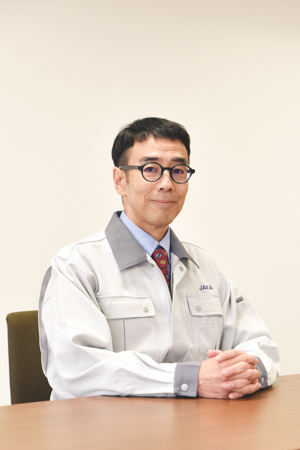Message
 Dr.MAEDA Toshikatsu
Dr.MAEDA Toshikatsu
Director General
Nuclear Science Research Institute
Japan Atomic Energy Agency
Japan lacks natural resources and will face an even lower birthrate and ageing social infrastructure. Economically, Japan has fallen far behind the US and China, and its international competitiveness is declining, mainly due to a long-standing failure to innovate. If this trend continues, Japan will enter an era of gross national poverty in the current generation of young people and their children and grandchildren. To ensure that this does not happen, we need to create innovation, increase productivity in various industries and increase the efficiency of social systems. What is essential for this, aside from anything else, is to secure energy. In the former 'oil age', Japan, not being an oil-producing country, had to rely on imports for much of its energy resources.
This will be different from now on.
Renewable energy generation is increasing all over the world, and even in Japan there is a surplus of electricity being dumped at certain times of the day. However, renewable energy sources are not suitable for baseload power sources as they are weather dependent. Baseload power sources in our country are thermal, hydro and nuclear. Of these, thermal power generation also plays a role in adjusting electricity supply and demand by covering renewable energy sources whose generation fluctuates, so the burden on thermal power generation increases as the amount of renewable energy introduced increases. In order to achieve carbon neutrality by 2050, which is an international commitment, and to keep the costs of energy supply down, the burden of thermal power generation needs to be lowered as much as possible. This requires increasing the share of nuclear power generation while striking an optimal balance with renewable energy.
This approach is one of the three pillars of research and development that JAEA aims to achieve: 'R&D for Synergy between Nuclear and Renewable'.
However, it is not easy for society to accept the 'Nuclear'.
In March 2011, the Great East Japan Earthquake occurred, and the accident at TEPCO's Fukushima Daiichi Nuclear Power Station occurred. When we saw the images of the nuclear buildings exploding, we, as people involved in nuclear power, were extremely shocked. The shock and impact on the residents of the neighbourhood and the rest of the country is immeasurable. Although many years have passed since then, I believe that the trauma of that time and the distrust of nuclear energy still remain significant for many people, not to mention the affected residents. Under these circumstances, the only way to gain public acceptance of nuclear energy is to steadily promote initiatives to restore public trust in nuclear energy. For instance, further safety improvements to prevent nuclear accidents, including accidents at nuclear power plants, from happening again, the safe and steady decommissioning of TEPCO's Fukushima Daiichi Nuclear Power Station, safe and efficient decommissioning of ageing nuclear facilities and the resolution of radioactive waste issues. The only way forward is to steadily advance efforts to solve the problem of radioactive waste and restore public confidence in nuclear energy.
This approach is one of the three pillars of research and development that JAEA aims to achieve: 'R&D to make nuclear power itself sustainable'.
The applications of nuclear technology are not limited to nuclear applications, including the use of neutrons and other types of radiation, as well as analytical measurement, simulation and separation and extraction technologies developed in the nuclear field. Such nuclear technology can be used in various industrial fields, such as the development of high-performance materials, recycling of resources, medical applications and space applications, thereby creating new innovations and benefiting society. Nuclear technology can also be a powerful tool for unravelling the mysteries of things - from the world of atoms and subatomic particles to the mysteries of the universe - and opening up the horizons of human knowledge. The elucidation and discovery of such phenomena not only satisfies people's intellectual curiosity but can also sometimes be the sprout of disruptive innovations, as a number of examples, such as X-rays and superconductivity, have proven.
This approach is one of the last of the three pillars of research and development that JAEA aims to achieve: 'R&D for the Ubiquitousness (Diversification) of Nuclear Technology'.
Diversification of nuclear technology also has another future goal. This is the arrival of a society in which nuclear technology is commonly used in everyday life. The word 'diversification' is expressed with this meaning in the word 'Ubiquitous'. We also believe that these efforts to make nuclear power more accessible will also lead to making nuclear power itself 'Sustainable', as mentioned above.
The various research and technological developments undertaken by the Nuclear Science Research Institute and other nuclear organisations are recognised as extremely important work for the future of Japan. In order to do this safely and to produce results in a timely and consistent manner, it is essential not only to have advanced research and technical capabilities, but also to have the ability to collect, analyse and utilise information on where, what and what technologies are available, to manage safety risks, social risks and the risk of delays in achievement, and above all, to have the administrative management skills and above all, the "passion" to promote these tasks smoothly.
As a group of professionals with such capabilities and passion, we at the Nuclear Science Research Institute will strive to create value that contributes to society, with the understanding and support of the local community.







